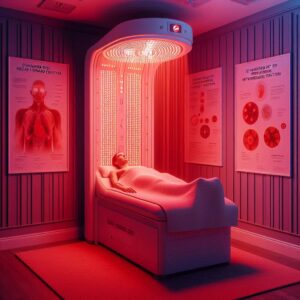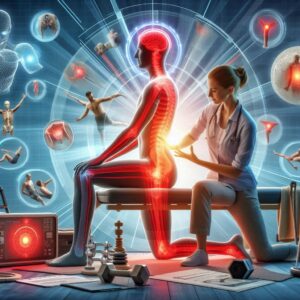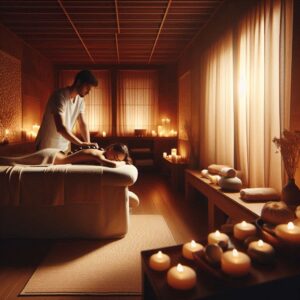Unlock Proven Red Light Therapy Techniques to Relieve Back Pain Effectively
Back pain is a prevalent issue affecting millions of individuals around the world, transcending various demographics such as age, gender, and lifestyle choices. This discomfort can manifest in many forms, ranging from sharp, sudden acute pain to persistent and debilitating chronic conditions that can linger for months or even years on end. The origins of back pain are multifaceted, often arising from a complex interaction of physical, psychological, and environmental factors, all of which create significant challenges in finding effective relief solutions. Understanding these intricacies is crucial for both patients and healthcare providers in addressing this widespread condition.
Among the most commonly identified causes of back pain are muscle strains, herniated discs, arthritis, and the negative effects of poor posture. The diverse nature of back pain complicates both diagnosis and treatment, as it may signal a more serious underlying health issue or exist as a standalone problem. Consequently, healthcare professionals often face a complex array of potential diagnoses and treatment strategies tailored to individuals struggling with this condition. A comprehensive understanding of these causes can empower patients and clinicians alike to pursue more effective treatment pathways.
The impact of back pain goes far beyond physical discomfort; it can significantly disrupt daily activities and diminish an individual's overall quality of life. Those suffering from this ailment often find themselves unable to perform routine tasks, engage in leisure activities, or maintain social relationships. This ongoing struggle can lead to feelings of frustration and isolation, which may contribute to mental health challenges such as depression. Furthermore, back pain is a principal contributor to absenteeism in the workplace, resulting in substantial economic burdens for both individuals and society as a whole. A thorough comprehension of the multifaceted challenges that accompany back pain is essential for developing effective treatment strategies that enhance the overall quality of life for affected individuals.
Discover How Red Light Therapy Can Transform Your Back Pain Management
- Back pain is a prevalent condition that can stem from various factors, including muscle strain, injuries, and poor posture. This complexity makes it challenging to establish effective treatment protocols.
- Red light therapy (RLT) stands out as a promising non-invasive treatment option, utilizing low-level red light to facilitate healing and reduce inflammation in specific areas.
- This innovative therapy alleviates back pain by enhancing blood circulation, relieving muscle stiffness, and accelerating tissue healing processes.
- Utilizing red light therapy for back pain offers a drug-free solution, promoting improved mobility and hastening recovery from injuries.
- Portable red light therapy devices allow for convenient at-home treatments; however, it is vital to adhere to safety guidelines and consult healthcare professionals for the best results.
 In-Depth Exploration of Red Light Therapy's Healing Impact
In-Depth Exploration of Red Light Therapy's Healing Impact
Red light therapy (RLT) has emerged as a revolutionary treatment modality that leverages specific wavelengths of light to stimulate healing processes and address a variety of health issues. This non-invasive therapy typically employs low-level lasers or light-emitting diodes (LEDs) to administer red and near-infrared light to targeted areas of the body. The foundational principles of RLT focus on invigorating cellular activities, particularly within the mitochondria, known as the powerhouse of our cells that generates energy.
By amplifying mitochondrial activity, red light therapy significantly boosts the production of adenosine triphosphate (ATP), the primary energy source for cellular functions. This surge in ATP production leads to increased energy levels and supports crucial cellular repair mechanisms. In recent years, RLT has gained traction, especially in the realms of sports medicine and rehabilitation, as athletes increasingly adopt this advanced technology to expedite recovery from injuries and enhance their overall performance.
The applications of RLT extend beyond the athletic community; substantial research has been conducted on its effectiveness for various conditions, including skin disorders, joint pain, and inflammatory conditions. Ongoing studies continue to uncover the therapeutic potential of red light therapy, reinforcing its status as a compelling option for individuals seeking relief from persistent pain issues, including back pain. As the body of evidence grows, RLT is becoming an increasingly viable alternative for those grappling with chronic discomfort.
Understand How Red Light Therapy Alleviates Back Pain Effectively
The efficacy of red light therapy in relieving back pain largely stems from its ability to penetrate the skin and stimulate the underlying tissues significantly. When applied to a painful area, the red and near-infrared wavelengths enhance blood flow and oxygen delivery, both of which are essential for healing damaged tissues. This improved circulation not only facilitates the transport of vital nutrients but also aids in the elimination of metabolic waste products that contribute to inflammation and discomfort.
As a result of these mechanisms, individuals may experience noticeable reductions in pain levels, along with enhanced overall mobility. Additionally, red light therapy is recognized for its potent anti-inflammatory properties, which further enhance its effectiveness in treating back pain. Inflammation is frequently a key underlying factor in various types of back pain, often resulting from injuries or chronic conditions such as arthritis.
By modulating inflammatory responses at the cellular level, RLT plays a crucial role in reducing swelling and tenderness in affected areas. This dual action—boosting circulation while simultaneously alleviating inflammation—positions red light therapy as an appealing holistic option for those exploring effective strategies to manage their back pain. With a greater understanding of how RLT operates, individuals can make more informed decisions regarding their treatment options.
 Explore the Multifaceted Benefits of Red Light Therapy for Back Pain Relief
Explore the Multifaceted Benefits of Red Light Therapy for Back Pain Relief
The benefits of red light therapy extend far beyond simple pain relief; they encompass a broad spectrum of positive effects that can significantly enhance an individual’s overall well-being. A primary advantage of RLT is its non-invasive nature, allowing patients to avoid potential side effects commonly associated with pharmaceutical treatments or invasive procedures. This characteristic makes red light therapy particularly appealing for those who may be hesitant about conventional medical therapies or have not found relief through other treatment avenues.
Moreover, red light therapy is generally well-tolerated, with minimal reported side effects, rendering it suitable for a diverse array of patients. Another significant advantage is the cumulative effect observed with consistent use. Many users report sustained symptom improvements by integrating red light therapy into their daily routines. This long-term approach not only addresses immediate discomfort but also fosters ongoing healing and recovery.
RLT can seamlessly complement existing treatment plans alongside other therapeutic modalities, such as physical rehabilitation or chiropractic care. As more individuals explore integrative therapies for chronic conditions like back pain, red light therapy is emerging as a versatile and practical solution that enhances overall treatment outcomes. By understanding its comprehensive benefits, patients can better assess how RLT might fit within their holistic health strategies.
Leverage At-Home Red Light Therapy for Convenient Back Pain Relief
The rising popularity of red light therapy among those seeking relief from back pain can be attributed to the convenience of at-home treatment options. With advancements in technology, various devices designed for personal use are now available, ranging from portable handheld units to larger panels intended for full-body treatments. These devices emit specific wavelengths of light that effectively promote healing and reduce inflammation.
At-home RLT provides a practical solution for busy individuals or those who prefer a more private setting for their treatment sessions. To maximize the benefits of red light therapy at home, it is essential to adhere to recommended guidelines regarding treatment duration and frequency. Experts typically suggest sessions lasting between 10 to 20 minutes per targeted area several times a week, depending on the severity of the condition being treated.
Consistency is crucial; regular use can lead to more noticeable and lasting results. Additionally, users should ensure they choose devices that emit the appropriate therapeutic wavelengths—generally within the range of 600 to 900 nanometers—to achieve the most effective outcomes. By following these guidelines, individuals can effectively harness the potential of at-home red light therapy to manage their back pain and improve their quality of life.
 Implementing Comprehensive Strategies for Effective Back Pain Management
Implementing Comprehensive Strategies for Effective Back Pain Management
While red light therapy offers a promising avenue for alleviating back pain, it is essential to adopt a holistic approach that integrates various treatment modalities. Traditional methods such as physical therapy and chiropractic care continue to form the backbone of effective back pain management. Physical therapists employ targeted exercises and stretches designed to strengthen core muscles and boost flexibility, which can help prevent future injuries and alleviate existing discomfort.
Chiropractic adjustments also play a crucial role in restoring proper spinal alignment and addressing complications related to nerve compression and musculoskeletal imbalances. In addition to these conventional treatments, alternative therapies—including acupuncture and massage therapy—have gained recognition for their effectiveness in managing back pain. Acupuncture, for instance, involves inserting fine needles into specific points on the body to stimulate energy flow and promote healing.
Many individuals report significant relief from chronic pain following acupuncture treatments. Similarly, massage therapy provides additional benefits by fostering relaxation, reducing muscle tension, and enhancing circulation—all of which contribute to alleviating back pain. By exploring a combination of these methods alongside red light therapy, individuals may discover a more comprehensive strategy for effectively managing their condition and promoting overall health.
Essential Safety Precautions for Safe Red Light Therapy Use
While red light therapy is generally considered safe for most individuals, it is vital to take specific precautions before starting treatment. Individuals with certain medical conditions, such as photosensitivity or particular skin disorders, should consult a healthcare professional prior to using RLT devices. Additionally, pregnant women are advised to exercise caution and seek medical guidance before undergoing any light therapy.
Understanding one’s health history is essential in determining whether red light therapy is appropriate for individual use. Furthermore, users must be discerning when selecting at-home RLT equipment. Not all devices are created equal; some may not emit the correct wavelengths or lack the necessary power output to achieve therapeutic effects.
It is crucial to thoroughly research reputable brands and consider user feedback before making a purchase. Lastly, while numerous users report positive outcomes with red light therapy, results can vary based on individual circumstances and adherence to treatment protocols. Therefore, maintaining realistic expectations and being open to adjusting one’s approach based on healthcare provider guidance is vital to achieving optimal results in managing back pain through this innovative therapy.
Commonly Asked Questions About Red Light Therapy
What is red light therapy, and how does it function?
Red light therapy, often referred to as low-level laser therapy (LLLT) or photobiomodulation, is a non-invasive treatment that utilizes low-level red light wavelengths to stimulate the body’s natural healing processes, effectively reducing pain and inflammation.
How does red light therapy specifically target back pain relief?
Red light therapy alleviates back pain by penetrating the skin to stimulate the production of adenosine triphosphate (ATP) within cells, thereby reducing inflammation and promoting tissue repair. Additionally, it enhances blood circulation, which is critical for facilitating the healing process for individuals suffering from back pain.
Is red light therapy a safe treatment option for back pain?
Red light therapy is generally regarded as a safe and non-invasive treatment for back pain. When applied according to established guidelines, it does not produce heat and is not associated with significant side effects.
What are the primary benefits of using red light therapy for back pain relief?
The main advantages of red light therapy for back pain include reduced inflammation, enhanced tissue repair, improved blood circulation, and substantial relief from pain and stiffness in affected areas.
How is red light therapy administered for back pain treatment?
Red light therapy can be applied using handheld devices or larger light panels over the affected back area. Treatment sessions typically last only a few minutes and may require repetition for optimal results.
Are there any contraindications for utilizing red light therapy for back pain?
While red light therapy is generally safe, it may not be suitable for individuals with specific medical conditions, such as epilepsy, or for those who are pregnant. Consulting with a healthcare professional before initiating red light therapy for back pain is essential.
Provided By: Red Light Therapy
The Article: Back Pain Relief With Red Light Therapy appeared first on https://mcrtherapies.co.uk
The Article Red Light Therapy for Back Pain Relief appeared first on https://mcrtherapies.com
The Article Back Pain Relief with Red Light Therapy Was Found On https://limitsofstrategy.com


It’s interesting to see a focus on red light therapy as a potential solution for back pain, considering how many people are exploring non-invasive treatments nowadays. I’ve personally found that integrating various approaches, like physical therapy along with emerging techniques like light therapy, can yield better results than relying on a single method.
It’s great to hear that you’re finding success with a mixed approach. I think that’s really where the future of pain management is heading. Red light therapy definitely seems to be gaining traction, especially as more people look for alternatives to pharmaceuticals and invasive procedures. It’s interesting how technology is evolving and providing us with tools that were once thought of as only futuristic or experimental.
It’s intriguing to see how the landscape of pain management is shifting. Personally, I’ve found that a mixed approach not only offers more flexibility but also empowers individuals to take control of their health. Red light therapy, in particular, has caught my attention. The science behind how it can promote healing and reduce inflammation is compelling. I’ve often thought about how many people shy away from pharmaceutical options due to concerns over side effects or dependence.
It’s great to hear that you’re exploring a mixed approach to pain management. The flexibility it offers can be a game changer, allowing people to personalize their treatment plans based on what works best for them. You mentioned red light therapy, and it’s fascinating how growing interest in non-pharmaceutical options is reshaping conversations around healing. Many people are indeed seeking alternatives, especially when they have concerns about side effects or the potential for dependence on medications.
You make an excellent point about the shift toward a mixed approach in pain management. It’s fascinating how red light therapy, which once seemed out of reach, is becoming more mainstream. This technology not only offers a non-invasive option but also taps into the body’s natural healing processes.
You bring up some really interesting points. The shift toward a mixed approach in pain management is definitely something I’m excited about too. It feels like we’re at a crossroads where people are more open to exploring different therapies—especially when it comes to alternatives to traditional meds.
You make a great point about the current openness to different therapies. It’s refreshing to see that more people are willing to look beyond just the typical pharmaceuticals. There’s so much potential in a mixed approach to pain management—whether that’s incorporating physical therapy, mindfulness practices, or even exploring dietary changes.
It’s great to hear how you’ve been mixing different approaches to tackle back pain. Balancing physical therapy and newer treatments like light therapy seems quite smart. Many people forget that chronic pain often requires a multi-faceted strategy instead of relying solely on one treatment. Have you noticed if certain combinations work better than others for you?
I totally agree with you on the value of integrating various approaches to manage back pain. It’s interesting how traditional methods like physical therapy can complement newer techniques like red light therapy. I’ve read about a few studies that suggest combining these therapies can enhance the body’s healing response, possibly due to how they work on different levels—one addressing muscle and structural issues, while the other might help with inflammation and cellular recovery.
You’ve touched on something really compelling with the idea of integrating different treatment approaches for back pain. It’s fascinating how these traditional and newer therapies can work together. Physical therapy often focuses on strengthening and mobility, targeting root issues that contribute to discomfort. When you add something like red light therapy into the mix, it seems to create a sort of synergy.
You make a great point about the importance of integrating various approaches for back pain management. I’ve found that a multi-faceted strategy can really help address the different aspects of discomfort. Physical therapy has been a game changer for me, especially when it comes to learning how to move properly and strengthen supporting muscles.
I found that the article’s insights on safe power washing really complement the idea of exploring diverse methods for tackling everyday challenges, much like combining physical therapy with new therapies.
‘The Significance of Safe Power Washing’
https://soonrs.com/the-significance-of-safe-power-washing/.
It’s refreshing to hear how a multi-faceted approach has made such a difference for you in managing back pain. Physical therapy often provides invaluable insights on movement patterns, and I can see how those lessons translate into everyday activities. Those small adjustments and the knowledge of how to protect your body really empower people dealing with discomfort.
It’s great to hear how physical therapy has positively impacted your back pain management. Learning to move correctly and strengthen those supporting muscles really does make a significant difference.
It’s true, learning to move correctly has been a game changer for so many people, including myself. Physical therapy doesn’t just focus on the pain; it encourages a deeper understanding of our bodies and how they work. Every session felt like uncovering new layers of strength and awareness.
You raise a really interesting point about the multi-faceted approach to back pain management. It’s so true that addressing different aspects of discomfort can often lead to more sustainable relief. I can relate to your experience with physical therapy; learning the right movements and how to strengthen those supporting muscles can make such a difference. It feels empowering to finally understand the mechanics of our bodies and how to care for them properly.
I completely agree with you on the importance of a multi-faceted approach to back pain management. It’s incredible how interconnected our bodies are, and realizing that can fundamentally change how we address discomfort. For me, physical therapy was a journey—it wasn’t just about the exercises but also about understanding why certain movements felt good or bad in my body.
I recently came across some insights on using acupuncture for back muscle spasms that really complement what you mentioned about a holistic approach to managing discomfort.
‘Acupuncture for Effective Relief from Back Muscle Spasms’
https://soonrs.com/acupuncture-for-effective-relief-from-back-muscle-spasms/.
It’s interesting to hear about your journey with physical therapy and the deeper understanding it provided regarding movement in your body. That self-awareness can make a big difference in how we manage pain.
I appreciate your reflections on the journey with physical therapy—it really does transform the way we understand our bodies. It’s fascinating to tune into those signals, isn’t it? Each movement teaches us something new.
It’s great to hear that physical therapy has made such a difference for you. It’s so crucial to understand how our bodies move and to strengthen those supporting muscles. Finding a good therapist who takes the time to teach proper movement patterns can really empower you to take control of your back pain.
You bring up a really interesting point about integrating various approaches for treating back pain. It’s become clear that a multi-faceted strategy can make a huge difference. I’ve been exploring light therapy myself and have found that it complements other methods like yoga or acupuncture quite well.
It’s fascinating how a multi-faceted strategy for back pain really highlights the interconnectedness of our body’s systems, isn’t it? I can relate to your experience with light therapy—I’ve read a bit about it and how it can aid in reducing inflammation and promoting healing. It’s intriguing to think about how technologies like this can work alongside more traditional approaches like yoga or acupuncture.
It’s great to hear that you’re exploring light therapy and finding it meshes well with practices like yoga and acupuncture. That blend of approaches really points to how personalized our back pain management can be.
It’s great to hear that you’re exploring light therapy! It really can add another layer to our approach to managing back pain. Each individual’s journey is unique, and finding the right combination of treatments can lead to exciting breakthroughs.
It’s great to hear about your experiences with combining different treatments. The landscape of pain management is definitely evolving, and people are recognizing that a multi-faceted approach often leads to more effective outcomes. It’s interesting how something as simple as light therapy can fit into this mix. It’s not about finding the magical one-size-fits-all solution anymore; instead, it’s about personalizing our treatment based on what feels right for us.
You’ve touched on an important point that resonates with a lot of people navigating chronic pain and seeking effective treatments. It’s clear that a one-size-fits-all solution rarely applies, especially when it comes to something as complex as back pain. Integrating various approaches, as you’ve found with physical therapy and light therapy, can create a more holistic pathway to relief.
It’s interesting how back pain can feel so personal yet is such a universal struggle. I’ve dealt with my share of it over the years, especially with long hours at a desk and not enough attention to posture. I’ve tried various treatments, but I’ve found that being proactive with things like stretching and strength training really makes a difference for me.
It’s true how back pain can feel so personal yet connect us all in some way. I’ve experienced that same struggle, especially with remote work becoming the norm; it’s easy to let posture slide while typing away for hours. I’m glad to hear that stretching and strength training have worked for you.
It’s interesting how something like back pain can create a shared experience among so many of us, especially as we adapt to this remote work lifestyle. You’re right; we often lose sight of our posture while we’re caught up in our tasks. I’ve found that being mindful of how I sit has made a world of difference, but it does take some conscious effort at first.
Your exploration of back pain and its multifaceted origins really resonates with me. I’ve experienced the frustration of chasing various treatments, from physical therapy to medication, only to find limited relief. It’s fascinating to see how emerging techniques like red light therapy are gaining traction.
Your exploration of back pain really resonates with me. I’ve personally struggled with chronic back issues for years, and it’s fascinating how varied the causes can be. I found it particularly interesting how you highlighted the roles of both physical and psychological factors. I’ve noticed that stress and anxiety often exacerbate my pain, which in turn creates a cycle that’s hard to break.